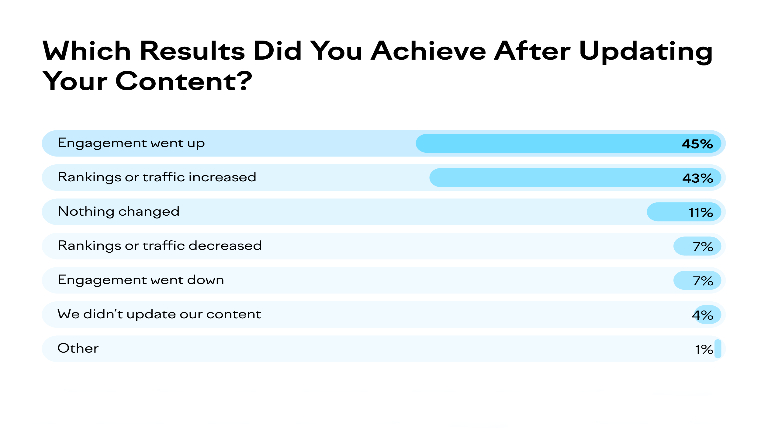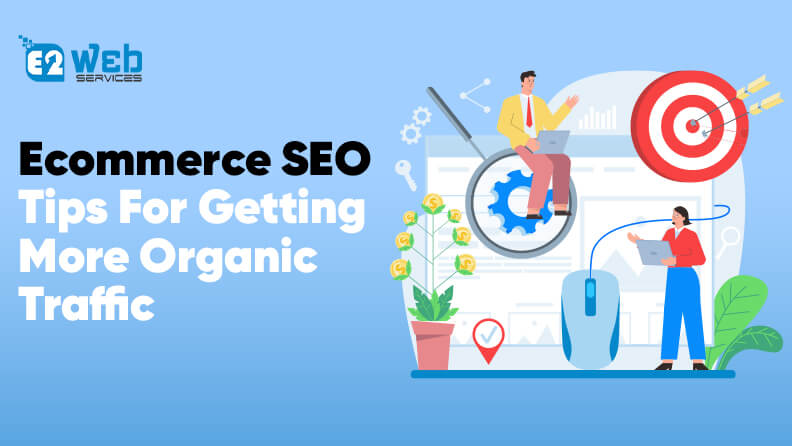SEO for Ecommerce Website: How to Increase Organic Traffic
Are you looking to increase organic traffic to your e-commerce store? If so, you have come to the right place.
SEO for e-commerce websites is a key element for success in the competitive online space. Organic traffic can provide a steady stream of potential customers who are already interested in what you have to offer.
In an analysis of website traffic by BrightEdge, organic search has been estimated to generate 53.3% of the traffic.
This means that if you want to get the most out of your e-commerce store, you need to maximize the potential of organic traffic. It’s essential to understand the strategies and techniques that will help you reach more of your target audience.
In this blog post, we’ll discuss tips for driving organic traffic to your e-commerce store. Learn how to use SEO and other strategies to bring more customers to your website and boost your sales.
7 Ways to Drive Organic Traffic to Your E-Commerce Website
Whether you’re just starting out with an e-commerce store or have been running one for a while, here are seven ways to drive organic traffic to your website.
1. Use Long-Tail Keywords
One of the most important steps in SEO for e-commerce websites is utilizing long-tail keywords. Long-tail keywords are phrases that are more specific than the general keywords that are used to search for a product or service.
For example, rather than using “shoes” as a keyword, you could use “women’s blue leather shoes size 7”.Using long-tail keywords in your content helps search engine bots crawl your website more effectively and rank it higher in the search results.
Note: The more precise the keyword, the better the chances of being found. This also allows you to target a more specific audience who are actively searching for what you offer.
When creating your SEO strategy for your e-commerce website, make sure to use long-tail keywords throughout your content. This includes:
- Title tags: Title tags should include the long-tail keywords relevant to the page. These titles should be unique to each page and accurately describe the page’s contents.
- Meta Description: Meta descriptions should include relevant long-tail keywords as well, but should also be descriptive enough to entice potential customers to click on your link when it appears in search engine results.
- URL Structure: URLs should include relevant long-tail keywords and be short, easy to understand, and concise.
- Image Optimization: Optimizing images with relevant long-tail keywords can help crawlers recognize them more easily and rank them higher. Images should include alt text with relevant keywords.
2. Optimize Product Pages for Rankings
Product pages are an important part of any e-commerce website as they provide customers with all the information they need to make a purchase decision. It should be optimized for both search engine rankings and customer experience.
When it comes to optimizing product pages for ranking, there are several key components you should focus on:
- Meta Titles and Descriptions: These should include the name of the product and relevant keywords. This will help search engines understand what your product is about and rank it higher in relevant searches.
- Product Images: Optimize images for SEO by including relevant keywords in their file names and titles. Additionally, make sure to provide alternative text for each image so that search engines can understand what the image is about.
- Copywriting: Product descriptions should be well-written, informative, and include relevant keywords. This will help search engines understand what your product is about and can help it show up in relevant searches.
- Internal Links: Linking to other products or related content on your site can help improve overall website rankings. This can be done through anchor text or through the ‘related product section of the page.
3. Publish Compelling Blog Content
Writing compelling blog content can be a great way to drive organic traffic to your e-commerce store. Not only does this increase brand awareness and provide a platform to engage with customers, but it also improves your chances of appearing in organic search results.
Moreover, creating high-quality blog posts is not an easy task. You need to understand how to craft content that meets the needs of your target audience and includes keywords that are relevant to your business.
You also need to create content that’s engaging enough to keep readers on your page and compel them to take action (i.e., purchase from you). Besides, updating your existing content is an excellent way to keep your site fresh and relevant.
According to research conducted by Semrush, most respondent says updating existing content is one of the most effective ways to increase engagement, rankings, and traffic without having to spend additional resources on new content.
 4. Implement Schema Markup
4. Implement Schema Markup
Schema markup is a type of code that can help search engines understand the content on your web pages. It gives search engines more context about what’s on your pages, which can boost their rankings in search results.
When you add schema markup to your e-commerce site, you’re providing search engines with information such as product name, price, image, availability, and rating. This gives search engines a better understanding of what you’re selling and how customers view it.
For example, you can use schema markup to let search engines know when an item is on sale or out of stock. This can be beneficial for both users and search engines alike.
Are you looking for an e-commerce website development company for multi-vendor portal development? If so, then E2web Services is here to help you with that and everything else that can lead to boosted eCommerce sales and seamless growth.
5. Promote Your Content
The best way to drive organic traffic to your e-commerce store is to promote your content. Content promotion involves disseminating your content across multiple channels so that your content reaches a wide audience and has the opportunity to bring in new customers.
There are many ways to promote your content, but some of the most effective include leveraging social media, building relationships with influencers, and utilizing email marketing.
Furthermore, organic search and email marketing are considered to be the most successful methods of driving organic traffic. A study by Conductor has revealed that 51 percent of website visits are the result of email campaigns.
6. Build External Links
Though there are many ways to build external links, a few common methods for e-commerce stores include guest blogging, claiming directories and listings, commenting on other relevant blogs and websites, and building relationships with influencers.
Additionally, keep an eye out for opportunities such as industry awards or press releases that can help you promote your site through backlinks. These activities all have the potential to increase organic traffic to your website by improving your visibility in search engines.
Key Notes:
While link building is often time-consuming and difficult, it can be extremely beneficial if done properly. It’s also important to remember to prioritize quality over quantity when it comes to external links, as too many low-quality links can actually lead to a penalty from search engines instead of an increase in visibility.
7. Monitor Your Progress
To maximize the effectiveness of your SEO efforts, it is essential to monitor your progress. Tracking your website’s performance can help you identify which strategies are working and which ones need improvement. Start by setting measurable goals and tracking key metrics such as organic traffic, keyword rankings, and conversions.
Google Analytics is a great place to begin. The data provided by Google Analytics can help you better understand your website visitors and their behavior. With the right analytics set up, you can track the pages they visit, how long they stay, and where they come from. This information can be used to help optimize existing pages and create more effective content.
By monitoring your progress, you can quickly identify what’s working and what’s not when it comes to SEO for e-commerce stores. Make sure you’re regularly checking in on the metrics outlined above to maximize the success of your online store.
Wrap Up!
It’s no secret that SEO is a critical component of any successful e-commerce website. Achieving high rankings in organic search results can drive significant amounts of traffic to your store and boost sales. However, it takes time, dedication, and an understanding of best practices to make sure your e-commerce store is optimized to its fullest potential.
The seven strategies outlined above are a great starting point for any e-commerce store owner looking to increase their organic traffic and grow their business. From using long-tail keywords and optimizing product pages to promoting content and building external links, each strategy should be implemented in order to maximize your chances of success.
Are you interested in building a scalable website with us? We provide our customers with the best website development services. No matter what kind of website you need, we are always there for you.
Shyam Kumar is an accomplished author with years of experience in crafting high-quality, engaging content that drives traffic and boosts rankings. He has a keen understanding of search engine algorithms and is skilled at creating content that not only ranks well but also resonates with readers. His dedication and expertise make him a valuable asset to any SEO team.



